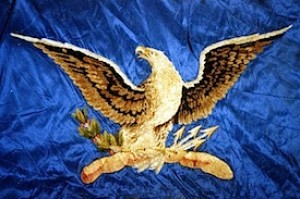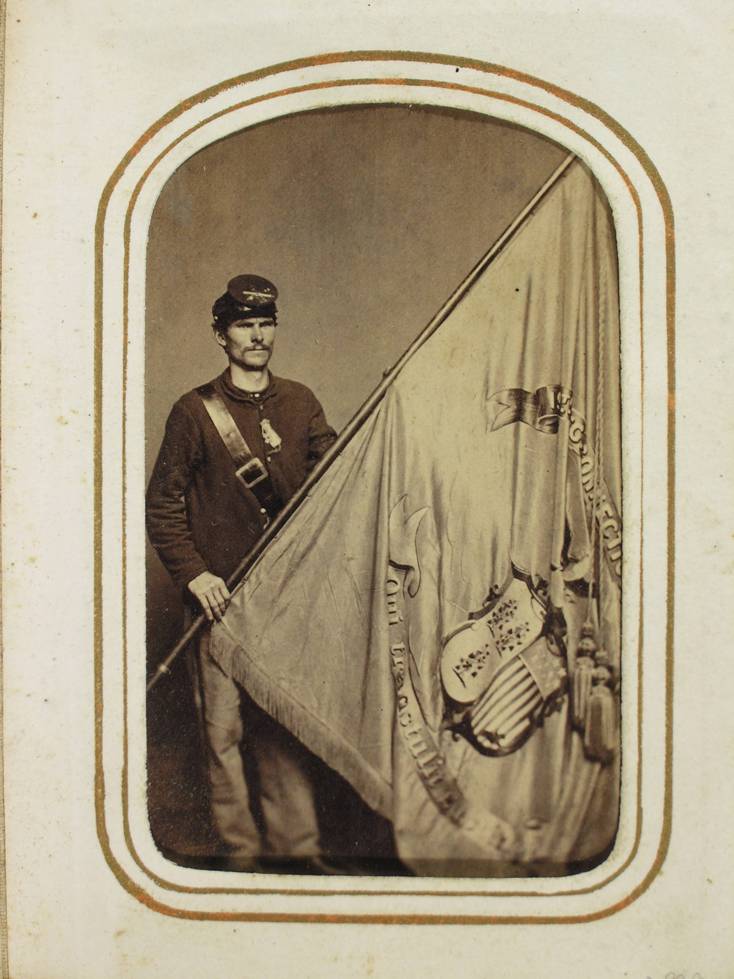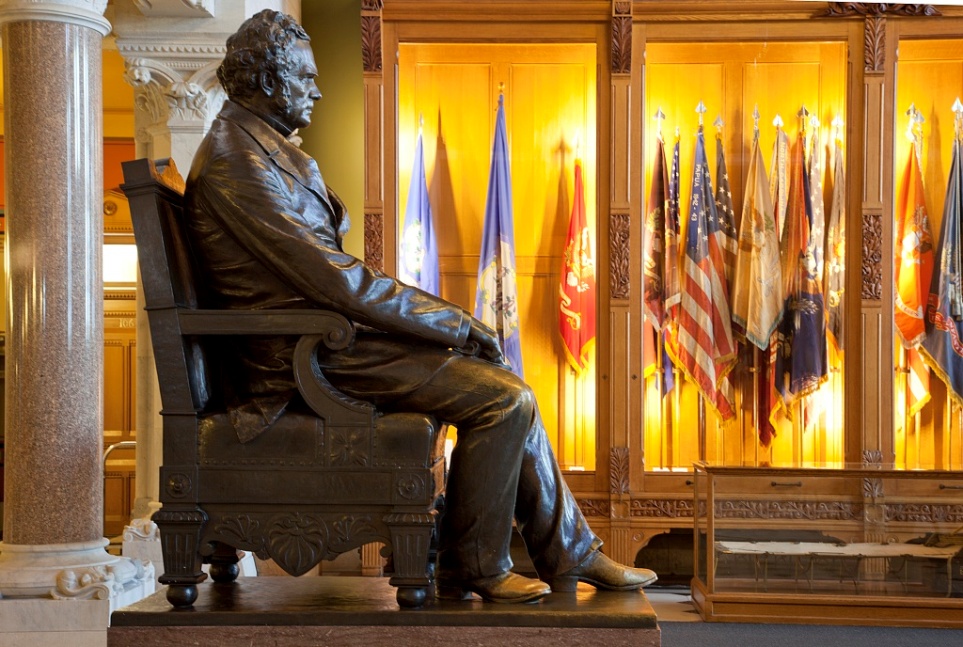By Gerry Caughman for Connecticut Explored
Flags have always been a visible symbol of patriotism that we instinctively protect. Our forefathers recognized the need to “follow the colors” when in the Second Congress, First Session, they instructed all states to create a state and regimental flag as the “legislature of the respective states directed.”
During the Civil War Connecticut units each carried two flags, a national and a regimental flag. Soldiers learned to focus on their flags in battle. As long as their flags were flying, there was hope. At the battle for Morris Island, South Carolina, color-bearer Gustave DeBouge of the 6th Connecticut Volunteer Infantry (CVI) fell dead on the regimental flag. Captain F. Osborn pulled it from beneath DeBouge’s body, causing the flag to tear in half. He quickly mounted the remaining half on his sword and urged his company forward. During the battle, as Colonel John Chatfield was carried from the field with his second leg wound, he said of the colors, “Keep them, keep them, as long as there is a thread left.” The surviving half of the flag is on display in the Hall of Flags at the Hartford State Capitol.

Crest designed by Tiffany & Company – Connecticut Battle Flag Collection
Connecticut’s first Civil War battle flags were hastily purchased from Frederick F. Rice, an artist and sign painter in Hartford. The regimental flag consisted of an eagle grasping a split shield with the state arms on one side and the federal emblem on the other. The canton (top inner quarter) of the national flag consisted of stars surrounding an eagle landing on a federal shield. Both clearly symbolized support for the federal government.
State Turns to Tiffany & Company for New Flag Designs
When William Aiken, Governor William Buckingham’s son-in-law, was appointed Quartermaster General of Connecticut, he went to Tiffany & Co. for flags. In early 1862, Tiffany designed three new patterns to be used for regimental flags and a special crest that remained in use until replaced by a single grapevine after World War I. Two of these patterns were to be used for embroidered flags, and one was to be painted on silk. The painted flag has four allegorical scenes. During July 1862, Connecticut received approval to order national flags from the federal government; therefore, Connecticut no longer paid for them. They could, however, be designed, and privately paid for, if approved by the Connecticut quartermaster general.

Corporal Thomas Fox , Second Connecticut Volunteer Heavy Artillery, B Company with his regimental flag – Connecticut Historical Society
The 18th CVI was presented with two embroidered flags made by Tiffany, the gift of the ladies of Norwich. Their first battle, outside Winchester, Virginia, was disastrous. When capture was imminent, color-bearer George Torrey tore the regimental flag from its staff and crawled away unnoticed. The national flag was surrendered to Confederate General James A. Walker, who gave it to the women of the town to make into a new Confederate flag. Sometime during the next six months, their regimental flag was mounted on a guidon staff, where it is today awaiting conservation, pending funding. In a speech to the 18th Regiment in 1863, General Robert H. Milroy said, “You come from a state whose soldiers never disgrace themselves nor their flag. I am proud of you.”
When the war ended, veterans brought home what was left of their flags; these were eventually stored in the state arsenal. When a new capitol was built in Hartford in 1878, provisions for exhibiting the flags had been made. A century and a half after the Civil War, the Hall of Flags continues to honor our men and women of all wars who died or suffered so much for our freedom.
Gerry Caughman, a tour guide at the Connecticut State Capitol in Hartford since 1979, began taking care of the Capitol’s 170-piece battle-flag collection in 1985.
© Connecticut Explored. All rights reserved. This article originally appeared in Connecticut Explored (formerly Hog River Journal) Vol. 9/ No. 2, SPRING 2011.
Note: ConnecticutHistory.org does not edit content originally published on another platform and therefore does not update any instances of outdated content or language.








